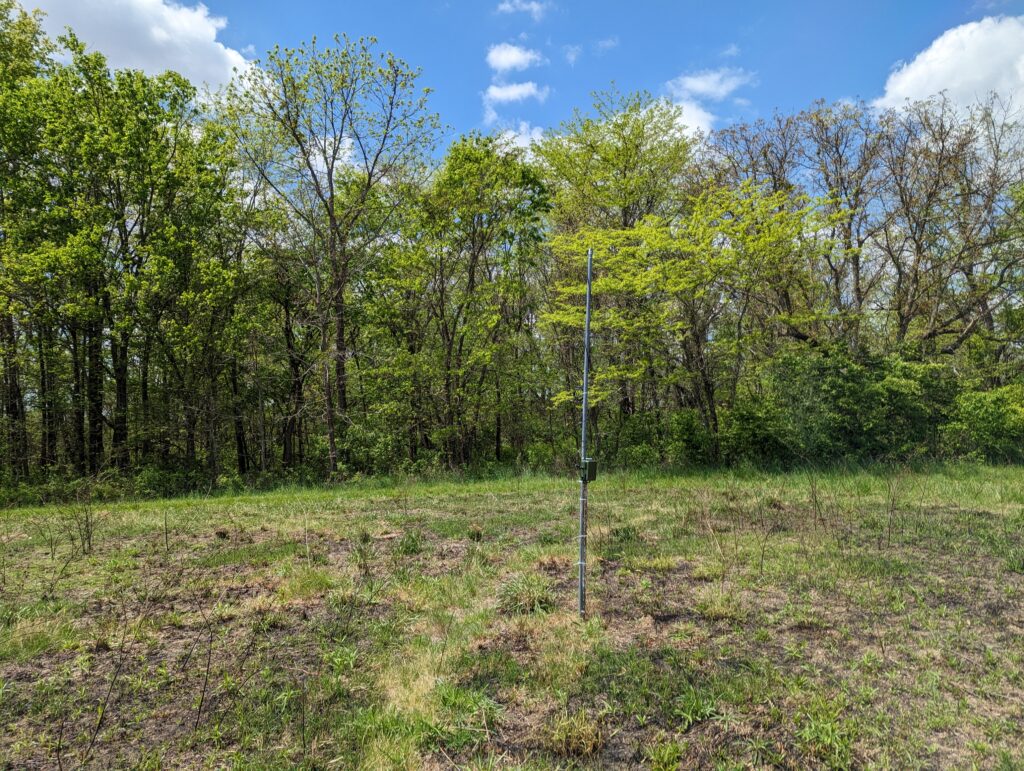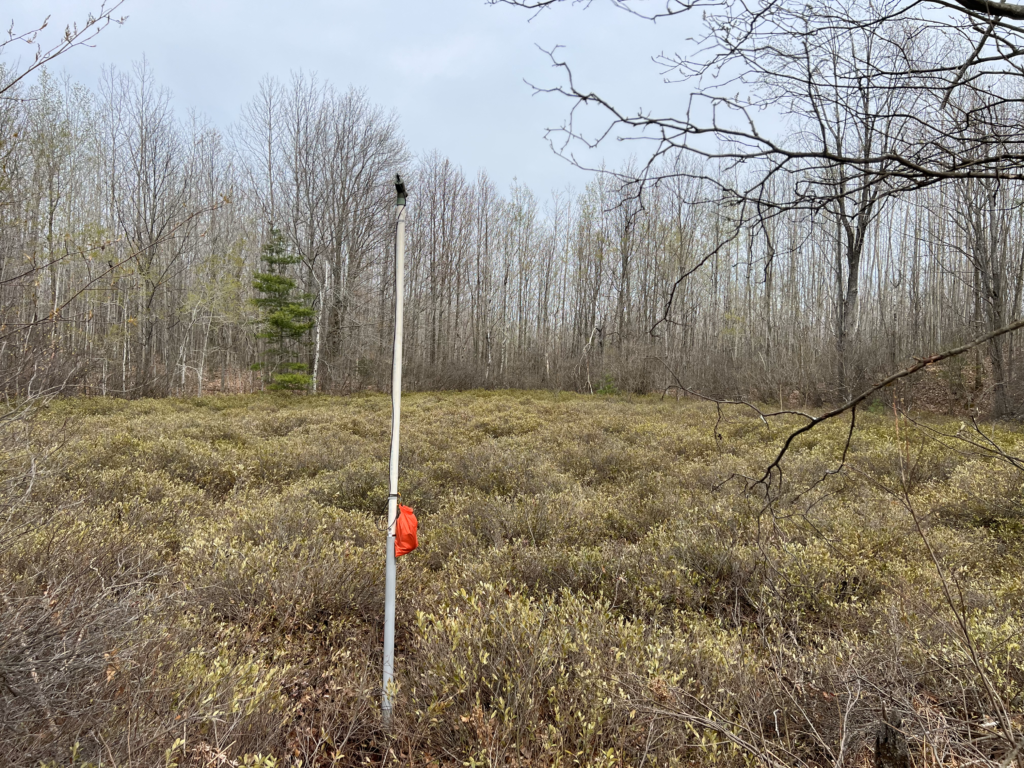
Monitor bats in your area!
Join the Midwest Bat Hub’s Volunteer Monitoring Network!
Want to learn more about bats in your area? Become a volunteer with the Midwest Bat Hub! We partner with volunteers to deploy acoustic bat detectors in our priority sampling areas across the Midwest. Once you’re signed up, we’ll provide you with training you need to understand your bat detector and pick a survey site, then we’ll send you an equipment box. Once you’re ready to begin, simply unpack your equipment box, insert fresh batteries and a memory card in the bat detector, and deploy your detector at your chosen site. After 4-7 days, you’ll return to the site to retrieve your bat detector and upload the data to our online cloud storage site. At the end of the season, we’ll send you a bat activity report for your site that you can share with others! Check out a sample bat activity report here.
What’s in the equipment box?
Once you’re signed up, you will receive an equipment box containing all the necessary equipment for you to monitor bats at your designated site. The equipment box includes:
- 1 bat detector + waterproof case
- 2 memory cards + card adapter
- 2 sets of batteries + battery charger
- Instructions on setting up your bat detector, uploading data, and more
Check to see if you’re in a priority sample cell!
We are seeking volunteers located in priority sample cells (in green) to monitor bats at stationary locations for at least 4 nights in June and 4 nights in July. To help us gain a more complete picture of bat activity during spring and fall, all volunteers are encouraged to monitor from April to October. To see if you’re in or near a priority sample cell, enter your address in the search bar in the top right of the map. You can also search for a sample cell if you know its GRTS ID number. Not located in a priority cell? That’s all right! We also partner with interested parties in other areas, after prioritizing available equipment to those located in priority sample cells.
What can stationary acoustic monitoring look like?




Frequently Asked Questions
- Where is the best place to deploy my bat detector?
- The best places to place a bat detector are around natural features such as streams and woodlands, but not closer than 30ft from water bodies, buildings, or trees. The sound rebounding on those objects can deteriorate data quality.
- How often do I have to check on the bat detector?
- Only once to deploy it and a week later to retrieve it! We send all volunteers a reminder email at the start of every month.
- Is it ok if I can’t maintain my bat detector on the first of each month?
- Sure. We try to standardize the timing of our data collection as much as possible, but we want your bat monitoring experience to work with your schedule. Try to deploy at the same times each month (for example, the first full week of each month), but if you need to miss your planned survey week, simply redeploy the next week instead.
- Should I monitor the same site each month?
- Yes. To establish trends in bat activity across the region, we need repeated samples at the same sites as often as possible. If you need to move your detector location, please work with our staff to determine the best path forward.
- Can I attach my bat detector on a tree?
- While we prefer attaching the detector on a pole or long branch (about 10ft tall) away from big trees, sometimes, this is difficult to do. Attaching your detector to a tree is a good alternative then. Try attaching it to a small branch (up to 5in in diameter).
- I live in a very urbanized area. Will I see any bats?
- Most likely! Some bat species have adapted well to living in urbanized areas and information on those bats is very valuable to their conservation.
2024 Volunteer Orientation Meeting
